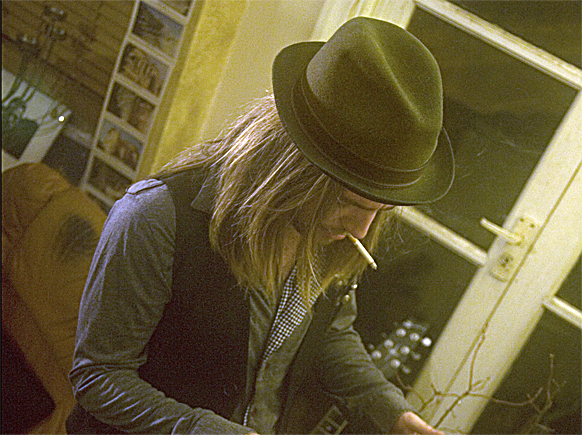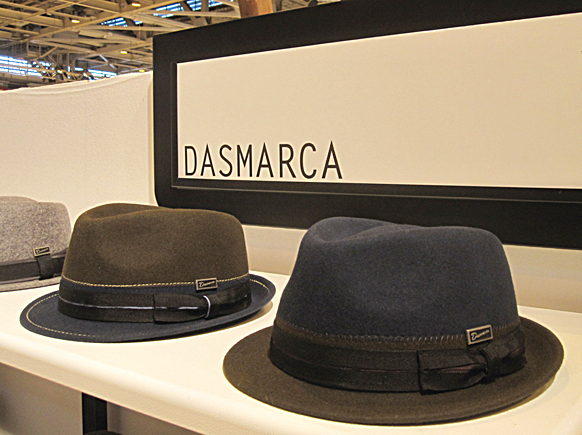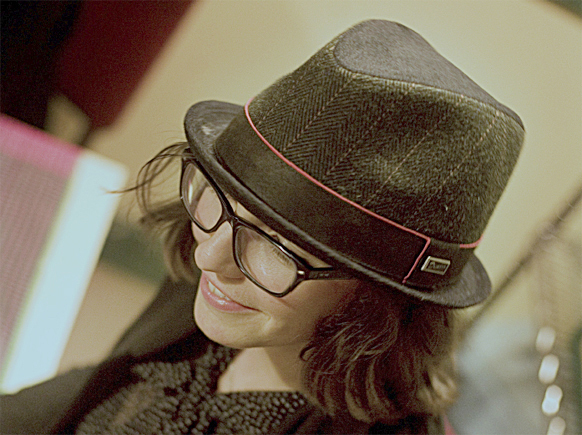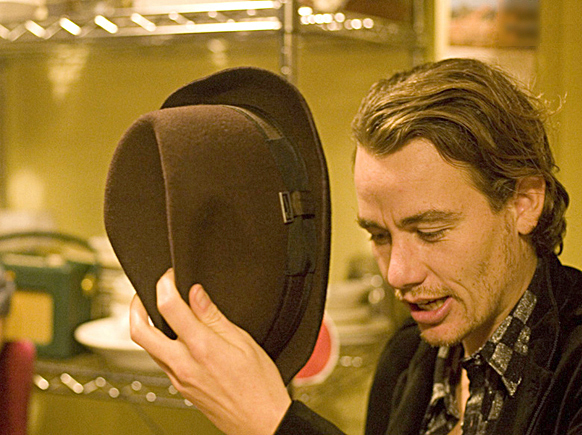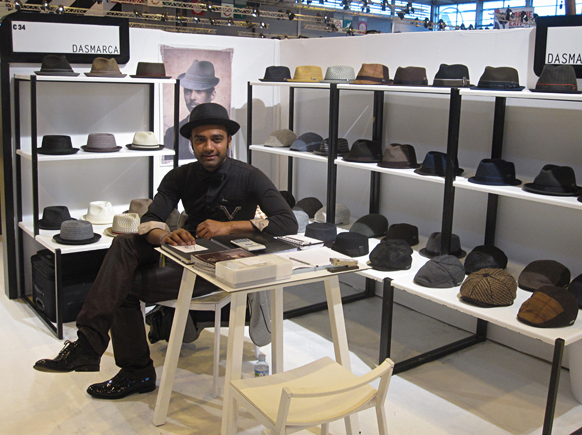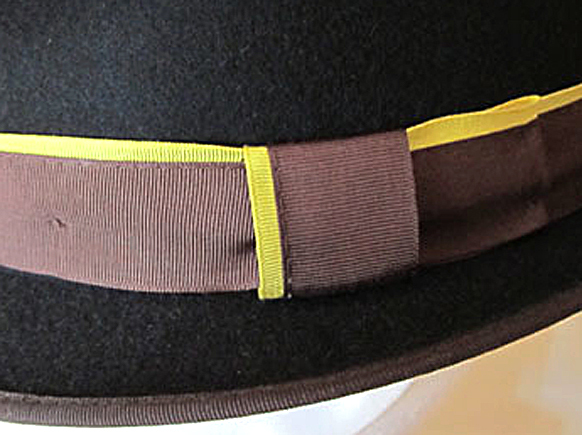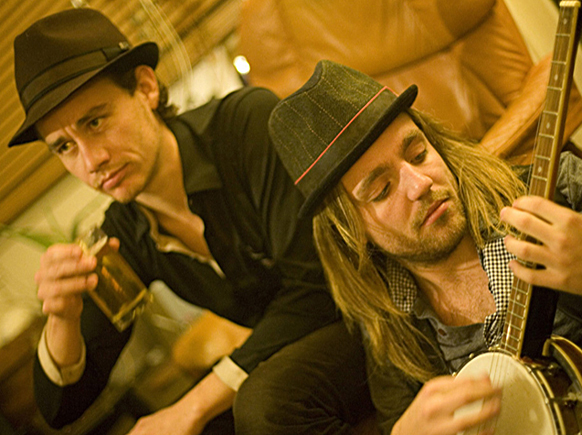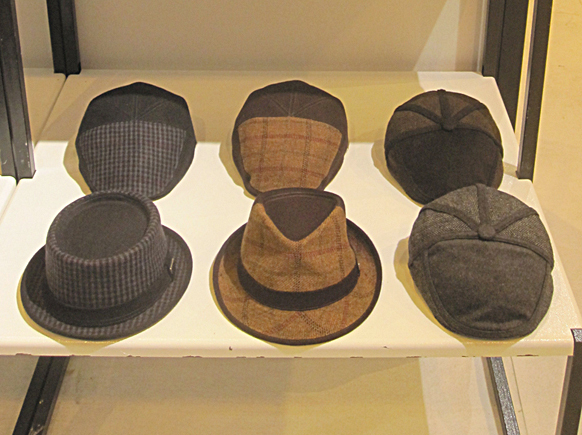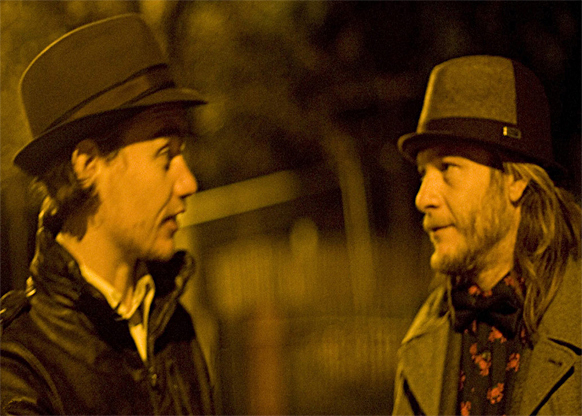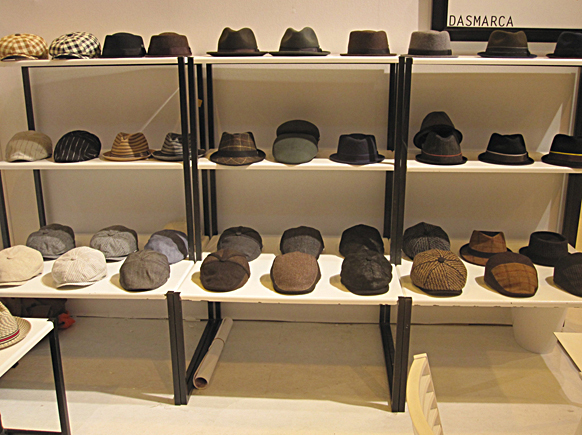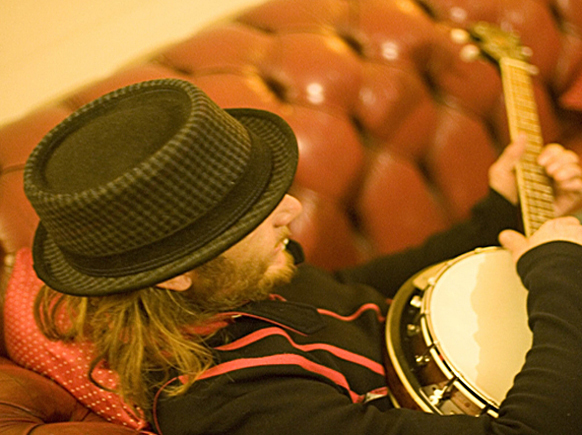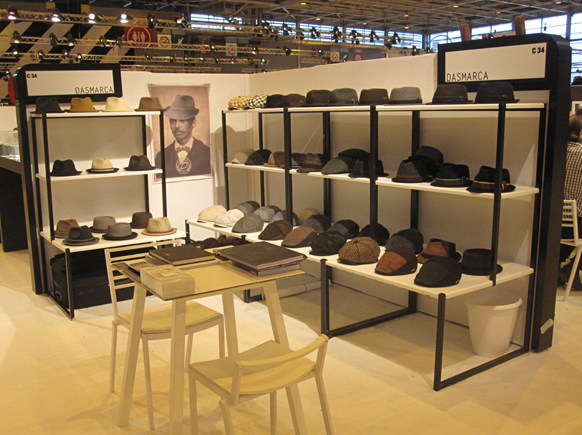Hats off to heritage
Without hats, said Christian Dior, “we would have no civilization.” The legendary couturier was well aware of the hat as pivotal to le style anglais. In Paris, since the 1770s, these three little words have stood for elegance. It was around then that French aristocrats fell in love with the riding and sporting clothes of their British counterparts. Thet were celebrated for their expert tailoring, understated style and simplicity.
Parisian Anglomania intensified after the Revolution, when aristocrats who had fled returned from across the Channel. They brought back both the cult of le dandy and of the English Romantics. Two hundred years later, le style anglais still features in French life, from architecture to clothes to interiors and gardening. After Galliano, McQueen, Westwood and Paul Smith, nothing pleases Parisians more than a new mode they view as ”so British”. Just ask Bidyut Das, the man behind the hottest hats at this year’s Première Classe.
Das runs the label Dasmarca, a line of hip heritage headgear sold from its web site as well as retail. Each of his titfers is modelled after an English classic such as the eight-piece, the bookie’s flat cap or the Trilby. Dasmarca’s summer models are made with an eco-braid mixed from paper, while winter hats feature felts with delicious contrasts and textures. Première Classe saw buyers lining up for the label from France, Italy, Germany, Belgium, Spain and Japan. The spring-summer collection is already at Roxan in Paris (23 rue Lepic 75018).
Bidyut Das is a veteran of both Central St. Martin’s and the Royal College. After graduation, he followed the trajectory for which those schools are famous, moving directly from student status to hot designer. Das’ degree show had featured what he calls “extreme knitting”, a fresh take on the craft he had learned as a child in India.
There, in his home village of Kanchanbury, even the youngest locals are put to work at the Lion looms. “Little kids are given big needles made out of bamboo, so they can learn to knit as early as possible.” At college, Das returned to the idea – making himself huge needles out of builders’ tools and broomsticks. In 2002, a project for the designer Russell Sage put Das and his “chunky knitting” centre-stage. Its success led him to establish his label, Dasmarca. “I called it that to mean ‘marked’ or ‘approved’ by Das. Because I was doing everything; I knitted every piece.”
His line of scarves (re-imagined as everything from collars to capes) was an immediate hit. They featured at Liberty and le Bon Marché, as well as in boutiques from Tokyo to Toronto. When Top Shop commissioned a collection Das launched a studio. With orders flooding in, he got some help from the Prince’s Trust. Yet none of his staff could master his singular style of knitting.
Kangol was also keen to recruit him so Das agreed to work part-time. His label, he found, was struggling with success. “I saw I was a craftsman but not a businessman. I was making things people fell in love with – but I was giving up everything to do them, I spent every spare moment knitting. I knew I needed to go and work in the industry, work and learn.” When cheap knockoffs of his chunky knitting started appearing, Das agreed to a fulltime job with Kangol.
It meant packing his bags and moving to New York. There, for the next three years, he designed for Kangol (Das also designed for Bailey’s of Hollywood and did their trend forecasting). For Kangol, he volunteered to oversee factory work, not just in America but also in China. It was the Far East that taught him critical lessons. “A couple of places in England still make traditional hats. But China never says no so everyone goes to China. However, they don’t always ask for creativity.”
Das discovered that, when he build up trust and challenged the companies, the whole game of Chinese manufacturing could be changed.
By mid-2010, he wanted a line of his own again. He also wanted to come home. “I wanted a British brand and I wanted to keep it niche. One of my contacts, a Chinese family factory, decided to back me”. Their usual minimum order was three hundred for any one model – and Das was starting out in mere double digits. But they loved his products and seemed to relish the challenge. “Despite migrant labour being the norm in China,” he says, “they are trying work with local people”. Dasmarca hats, with their quality and hand-finish, offer proof that the partnership is working for everyone.
Back in his knitting days, Das sourced merino from South Yorkshire’s Wingham Wool Works. He is still trying to move hat production to Britain. “After Première Classe, I gave it another try. Because you have respect for your country and you want to give back. But, at the moment, no one here can do it.”
So, in addition to managing everything else, Das continues to liaise with China. From its budget (ten years’ worth of his personal savings) to the website, Dasmarca is essentially a one-man studio. But, thanks to his gruelling Manhattan experience, Das can manage. The workload may be huge, but it lets him oversee the product’s every aspect. “From the start, I knew I wanted to thoroughly brand it. I love my British heritage and I’m obsessed with its visual history. Giving that a modern London twist is the handwriting of my style.”
All the Dasmarca hats are unisex. Their shapes evoke standards from James Locke or Bates the Hatter. But each has a special subtlety, from wonderful fabrics to touches like flamingo-pink piping or grosgrain bands in citron and chocolate (or their metal pins with the Dasmarca trademark). Their very British range of colours is worthy of Farrow and Ball.
It’s an exhausting life, yet Das remains upbeat. Based in Bloomsbury, he’s immersed in London life. “If you survive New York, you can survive anything. But here people are more individual. My main market is London and, after that, Europe. Because the client I want is looking for more than high street fashion. Even in a recession, they have to look unique.”
Ah, the “R” word, how does it affect him? “Well, I came to England at the age of twelve. To me, it sort of feels like there’s always been a recession. Certainly, there’s never been a good time to set up a business. But a recession is helpful in that it makes you careful.” He smiles. “It’s also not a bad time for accessories. A hat is not a huge investment, yet it really makes a statement.”
As M. Dior would say, he’s doing his bit for civilization.
• Want to meet more bicultural hat fanatics? Check out Honoré de Balzac’s Treatise on Elegant Living, (Traité de la vie élégante), Ellen Moer’s classic The Dandy and The New English Dandy, available in both English and French.


